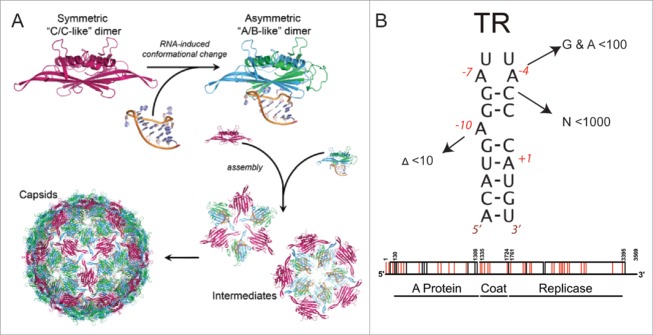Figure 2.
PS-mediated assembly of the T = 3 MS2 virion. (A) The capsomere in this case is a CP dimer, which in the absence of RNA is symmetrical in solution, consistent with it resembling the C/C quasi-dimer of the capsid. Binding to TR, and other related stem-loops, triggers a conformational change to the A/B-like dimer. Such RNA switching is required up to 60 times to make the T = 3 shell. (B) There is only a single copy of TR within the MS2 genome but many variant stem-loops can be formed that contain some of the important recognition features for CP31. Note, when these interactions (arrowed in figure) are measured in vitro their affinities are lowered significantly (shown as relative reduced affinities compared to TR). However, the concentration of a single stem-loop in the volume of the capsid is ˜0.3 mM. This compares with the Kd for TR binding to a CP dimer which is 1–10 nM, depending on the assays used. In vivo therefore many of the variant stem-loops can be expected to act as PSs. The locations of these variant PSs have been predicted and are shown below on the genetic map of the phage. Those that are also independently identified by the recent cross-linking within infectious phage are highlighted in red.

